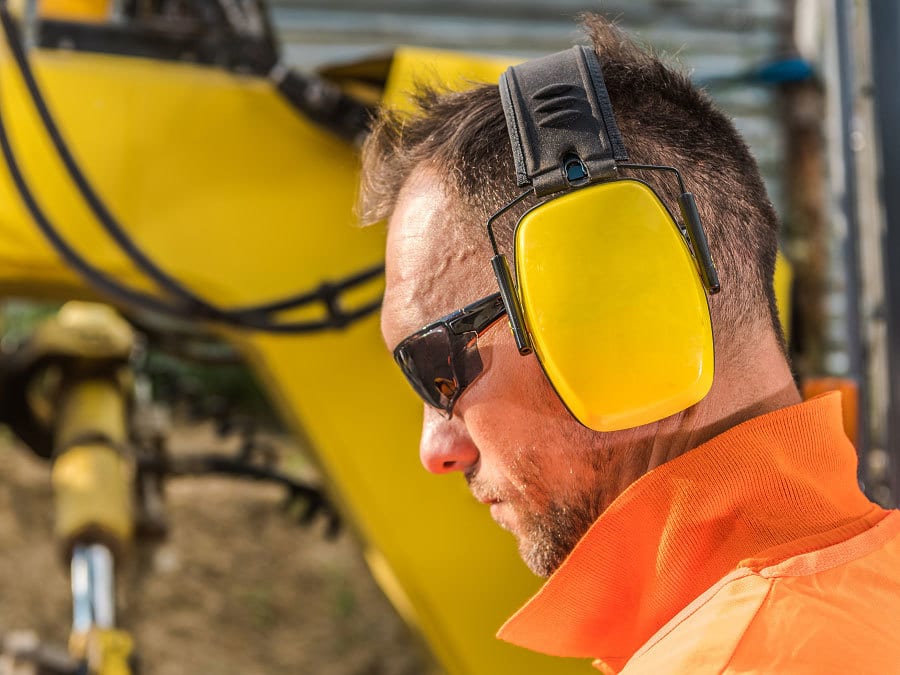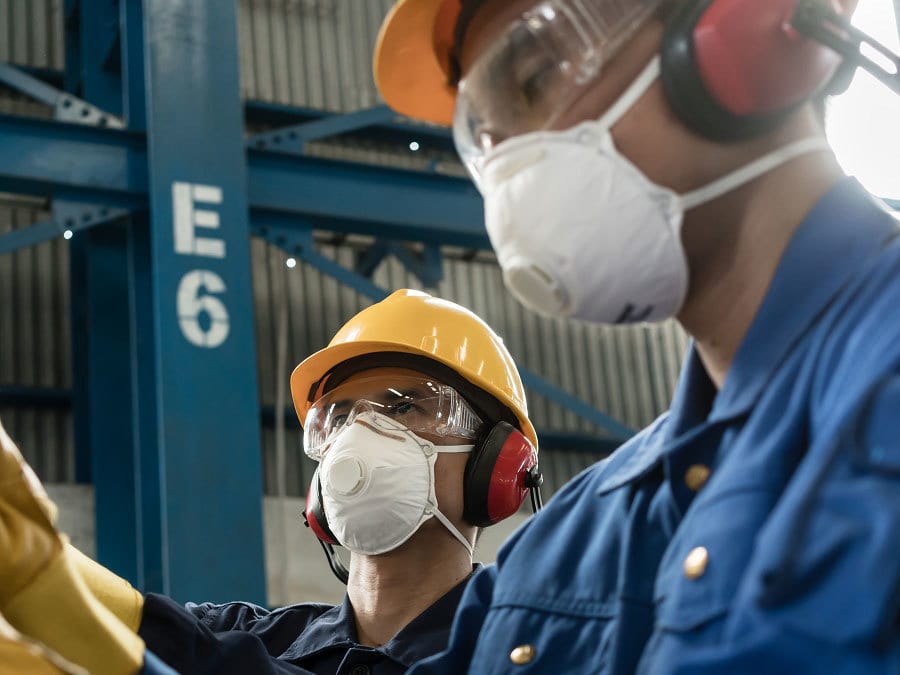PPE

Photos courtesy of PK Safety.
Sound
Awareness
Know how to properly assess noise levels and choose the proper protection
By Rick Pedley
T
he prolonged purr of an engine, noisy equipment, and grinding of natural materials are just some of the workplace noises that may directly threaten the health and safety of employees. Workers are in danger of damaging their hearing when exposed to more than 85 dBs of sound for eight hours on a time-weighted average. Noises can also cause damage to the inner ear, which can lead to long-term ringing in the ears or tinnitus. Under OSHA’s Occupational Noise Exposure Standard (29 Code of Federal Regulations (CFR) 1910.95), employers must take precautions to protect their workers from permanent hearing loss. Every workplace should have a hearing protection program in place when noise levels exceed 85 decibels. This guide is meant to steer companies in the right direction.

When to wear hearing protection
Employers should first assess the noise levels present in the workplace using a sound meter, including the decibel level of the noise and the duration of exposure. It only takes a few seconds for a sound louder than 140 dBs to permanently damage a person’s eardrums. They should then look for ways to reduce the noise level if possible, such as:
• Using quieter equipment or vehicles
• Installing sound barriers
• Rotating crews in and out of the work site
• Increasing the distance between the workers and the source of the sound
If the sound exposure level cannot be reduced, everyone must wear hearing protection when occupying the work environment.

Selecting the Right Hearing Protection
Companies should aim to provide a range of options when selecting hearing protection for workers, such as those that can be worn with other types of safety equipment, head, neck, or chin bands, and earmuffs that fit over the ears or earplugs that fit inside the ear canal, depending on each person’s preference. Earplugs come in several different styles, including pre-molded, with and without inner plugs, custom-molded, or corded.
Different types of hearing protection are designed for different purposes. Dielectric headphones are used in environments with electrical hazards. Workers can use disposable earplugs underneath if they need to take their earmuffs off in hot areas.
Every item should be comfortable and easy to wear on the job without interfering with the person’s ability to do their job. Employers should also consider how often the workers will need to wear their hearing protection. Reusable options include earmuffs and earplugs made with durable materials. Disposable options mainly include foam earplugs that cannot be used more than once.
If the hearing protection can potentially get permanently soiled, or the worker doesn’t need to use this hearing protection regularly, disposable hearing protection may be the best option. But it may make more sense to utilize reusable hearing protection if the workers need to wear these items continuously. Reusable items must be maintained and cleaned before and after each shift. Workers should thoroughly inspect their hearing protection for damage before each use. Keep an eye out for cracks or tears in earplugs and make sure they are clean to avoid buildup of bacteria and potential ear infections. If hearing protection is damaged, it should be disposed of and replaced right away. Multiple pairs of earplugs should be available to workers in case a pair becomes damaged or gets lost.
This equipment will only be effective if workers know how to use it properly. Managers must train employees to ensure they have all the information they need to protect themselves on the job. Continued employee awareness and installing “High Noise Area” signs can also help. And because hearing damage is cumulative, it’s encouraged to conduct pre-employment screening for existing hearing loss, especially for jobs where high-noise environments can be expected.
Employers have no shortage of options when it comes to protecting their workers from hearing loss. Loud noises can occur suddenly and without warning. Every company needs to do its part to keep workers safe on the job.
Rick Pedley, PK Safety’s President and CEO, joined the family business in 1979. PK Safety, a supplier of occupational safety and personal protective equipment and manufacturer of their own new FR line Grit, has been operating since 1947 and takes OSHA, ANSI, PPE, and CSA work safety equipment seriously. PK Safety's customer service can be reached at 800-829-9580 or online here.
